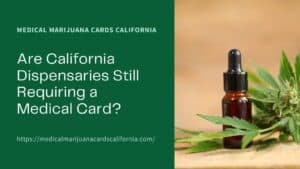In the past few years, medical marijuana has become more and more popular as a natural and effective way to relieve the symptoms of different medical conditions.
Since it has become legal in many states, the market for medical marijuana has grown, giving patients more ways to use it.
However, with so many forms of medical marijuana available, it can be challenging to know which form is right for you.
In this article, we will take a detailed look at the various forms of medical marijuana, their pros and cons, and which form may be best suited for your needs.
By the end of this article, you will have a better understanding of which form of medical marijuana may be right for you.
Table of Contents
ToggleExplanation of forms of medical marijuana
Medical marijuana comes in several different forms, each with its own benefits and drawbacks. The main forms of medical marijuana are inhalation, oral, topical, and suppositories.
Inhalation is one of the most popular forms of medical marijuana, and it involves smoking or vaporizing the plant. Burning dried marijuana flowers, which are then smoked through a pipe or rolled into a joint, is what smoking is.
When you vape, you heat the marijuana to a high enough temperature to get the active compounds out of the plant without burning it. People think that vaping is healthier than smoking because it doesn’t produce harmful smoke.
Oral forms of medical marijuana include edibles and tinctures. Edibles are food items like cookies, brownies, and gummies that have been mixed with marijuana. Tinctures are liquid extracts of marijuana that are usually taken sublingually, or under the tongue.
Topical forms of medical marijuana include creams, lotions, and transdermal patches. These are put on the skin directly and are meant to relieve pain and swelling in a specific area.
Suppositories are another form of medical marijuana that is gaining popularity. Suppositories are put into the rectum and are meant to help with pain, inflammation, and digestive problems quickly and for a long time.
It’s important to remember that the effectiveness of each type of medical marijuana depends on the person’s health condition and personal preferences.
It’s important to talk to a medical professional to find out which type of medical marijuana might be best for you.
Understanding different forms of medical marijuana
Understanding the different forms of medical marijuana is important for several reasons.
- Each form of medical marijuana has its own unique set of benefits and drawbacks. Choosing the right form can be the difference between successful symptom management and ineffective treatment.
- Certain forms of medical marijuana may be more appropriate for certain medical conditions. For example, inhalation may be more effective for conditions like chronic pain, while topical applications may be more beneficial for skin conditions or localized pain.
- Some forms of medical marijuana may be more convenient or discreet than others. For example, edibles or tinctures may be a better option for patients who don’t want to smoke or vaporize their medication.
Finally, understanding the different forms of medical marijuana can help patients make informed decisions about their treatment options.
By working closely with a healthcare professional and understanding the pros and cons of each form, patients can make informed decisions about their treatment plans and achieve the best possible outcomes.
Inhalation Methods
Inhalation is one of the most common methods of consuming medical marijuana, and it can be accomplished by either smoking or vaporizing the plant. Inhalation methods are often preferred because the active compounds in marijuana are rapidly absorbed into the bloodstream through the lungs, providing quick relief from symptoms.
Smoking marijuana
Smoking marijuana involves the combustion of dried marijuana flowers, which are then inhaled through a pipe or rolled into a joint. While smoking is an easy and cost-effective method, it can be harmful to the lungs due to the inhalation of smoke.
Pros and cons of smoking marijuana
Pros:
- Fast-acting: Smoking marijuana provides quick relief from symptoms, as the active compounds in the marijuana are rapidly absorbed into the bloodstream through the lungs.
- Cost-effective: Smoking marijuana can be a more cost-effective option compared to other forms, as the effects are felt quickly, and less product is needed.
- Easier to dose: Smoking marijuana allows for easier dosing and titration, as the effects are felt almost immediately.
Cons:
- Harmful smoke: The combustion of the plant material produces harmful smoke, which can irritate the lungs and lead to respiratory issues.
- May be difficult for some patients: Smoking marijuana can be challenging for patients with certain medical conditions, such as asthma, chronic obstructive pulmonary disease (COPD), or lung cancer.
- Less discreet: Smoking marijuana can be less discreet than other forms of medical marijuana, and it can leave a lingering smell in the environment.
- Not allowed in certain public places: Smoking marijuana is not allowed in certain public places and may not be a suitable option for patients who are sensitive to the smell or who do not want to be seen smoking.
- Dependency: Frequent smoking may lead to dependency or addiction, which can have long-term health implications.
Vaporizing
When you vape, you heat the marijuana to a temperature where the active compounds are released into a vapor that you can inhale. Vaping is seen as a healthier alternative to smoking because it makes fewer harmful byproducts, but it requires special equipment.
Pros and cons of vaporizing marijuana
Pros:
- Healthier alternative: Vaporizing marijuana is considered a healthier alternative to smoking, as it produces fewer harmful byproducts. It also eliminates the inhalation of smoke, which can irritate the lungs.
- Fast-acting: Vaporizing marijuana provides quick relief from symptoms, as the active compounds in the marijuana are rapidly absorbed into the bloodstream through the lungs.
- Easier to dose: Vaporizing marijuana allows for easier dosing and titration, as the effects are felt almost immediately.
- More discreet: Vaporizing marijuana is more discreet than smoking, as it produces less odor and is less visible.
- More efficient use of marijuana: Vaporizing marijuana is more efficient than smoking, as it allows for the activation of a larger percentage of the active compounds in the plant material.
Cons:
- Equipment cost: Vaporizing marijuana requires specialized equipment, which can be expensive and may not be covered by insurance.
- Learning curve: Vaporizing marijuana may require some trial and error to find the right temperature and dosage for individual patients.
- Limited portability: Vaporizing marijuana is less portable than smoking, as it requires access to a power source.
- Not allowed in certain public places: Vaporizing marijuana is not allowed in certain public places, and patients may need to be discreet about their use of the equipment.
- Dependency: Frequent vaporizing may lead to dependency or addiction, which can have long-term health implications.
Oral Methods
Oral methods of medical marijuana involve ingesting cannabis-infused products. These products include edibles, tinctures, and capsules, and are designed to provide long-lasting relief from a range of medical conditions.
- Edibles are food products infused with marijuana, such as brownies, gummies, and chocolates.
- Tinctures are liquid extracts that are placed under the tongue or added to food or drink.
- Capsules contain marijuana oil or powder and are swallowed like any other pill.
Oral methods of medical marijuana are popular among patients who do not want to inhale smoke or vapor. They can be more discreet than smoking and provide longer-lasting effects than inhalation methods.
However, it is important to be cautious with dosing when using oral methods, as they can take longer to take effect and can be more potent than other forms of medical marijuana.
Edibles
Edibles are food products that are infused with marijuana. They are a popular choice for medical marijuana patients who prefer to avoid smoking or vaporizing. Edibles come in various forms, such as gummies, brownies, chocolates, and more. The effects of edibles can take longer to feel compared to smoking or vaporizing, but the effects last longer.
Pros and cons of edibles
Pros:
- Long-lasting effects: The effects of edibles can last up to eight hours, which is longer than other methods of consumption.
- Discreet: Edibles are more discreet and don’t produce the odor associated with smoking or vaporizing.
- Variety: Edibles come in various forms, such as gummies, brownies, chocolates, and more, making it easy for patients to choose a product that suits their preferences.
Cons:
- Delayed onset: The effects of edibles can take up to two hours to feel, which can be challenging for patients who need immediate relief.
- Difficulty dosing: It can be difficult to determine the appropriate dosage for edibles, which can lead to over-consumption and undesirable side effects.
- Uneven distribution: The marijuana content in edibles can be unevenly distributed, leading to inconsistent effects.
- Overconsumption: Edibles can be tempting to eat more, which can result in consuming too much marijuana, leading to negative side effects.
- Potency: Edibles can be more potent than other forms of marijuana, and as a result, it is easy to over-consume them.
Tinctures
Tinctures are concentrated liquids that are made by soaking marijuana in alcohol or glycerin. Tinctures are usually administered sublingually (under the tongue), and the effects are felt quickly.
Tinctures are often preferred by people who need to use medical marijuana but don’t want to smoke or breathe in vapor.
Pros and cons of Tinctures
Pros:
- Discreet: Tinctures can be easily added to food or drink, making them a discreet option for medical marijuana consumption.
- Easy to dose: Tinctures come with a dropper, making it easy for patients to dose accurately.
- Fast-acting: Tinctures can be absorbed quickly into the bloodstream, providing patients with quick relief.
- Long shelf life: Tinctures have a longer shelf life than other forms of marijuana, making them a more practical option for patients who use medical marijuana infrequently.
- Controlled dosing: Patients can easily control their dosing with tinctures, as they can add or subtract drops as needed.
Cons:
- Taste: Tinctures can have a strong, bitter taste that may be unappealing to some patients.
- Alcohol-based: Many tinctures are alcohol-based, which can be an issue for patients who don’t want to consume alcohol.
- Limited availability: Tinctures may not be as widely available as other forms of medical marijuana, making it difficult for some patients to access them.
- Dosage may be inaccurate: It can be challenging to accurately measure the dosage when using a dropper, which can lead to over or under-consumption of medical marijuana.
Capsules
Medical marijuana capsules contain marijuana oil or dried marijuana, and they are taken orally like any other medication.
Medical marijuana patients who want a discreet, easy-to-use way to take their medicine often choose capsules. Capsules come in various dosages and are useful for patients who require precise dosing.
Pros and cons of Capsules
Pros:
- Discreet: Capsules are a discreet option for medical marijuana consumption, as they don’t produce the odor associated with smoking or vaporizing.
- Accurate dosing: Capsules come with pre-determined dosages, making it easy for patients to know exactly how much they are consuming.
- Long-lasting effects: Capsules can provide long-lasting effects, making them a good option for patients who need relief throughout the day.
- No inhalation: Capsules eliminate the need for inhalation, which can be beneficial for patients with respiratory issues.
- No taste: Capsules are tasteless, making them a good option for patients who don’t like the taste of other marijuana products.
Cons:
- Delayed onset: Capsules take longer to take effect, and patients may need to wait up to two hours before feeling any effects.
- Difficult to adjust dosage: Since the dosage is pre-determined, it can be challenging to adjust the dosage to meet specific needs.
- Cost: Capsules can be more expensive than other forms of medical marijuana.
- Not suitable for patients with swallowing issues: Capsules may not be the best option for patients who have difficulty swallowing.
- Limited availability: Capsules may not be as widely available as other forms of medical marijuana, making it difficult for some patients to access them.
Topical methods
Topical methods of medical marijuana involve applying cannabis-infused products directly to the skin. These products, which include creams, lotions, balms, and oils, are meant to help with pain, inflammation, and other symptoms in a specific area.
Topical marijuana products are not psychoactive, which means they don’t give you the same “high” that smoking or eating marijuana does.
Instead, they work by binding to cannabinoid receptors in the skin and activating the body’s endocannabinoid system, which regulates pain and inflammation.
Topical methods are a discreet and easy way for people who don’t want to smoke or eat medical marijuana to get its effects. Athletes and people with muscle pain also like them because they can give relief to specific parts of the body.
Creams and lotions
Creams and lotions are emulsions that typically contain water, oil, and an emulsifying agent. They have a smooth and creamy texture that is easily absorbed into the skin. They are often used to treat skin conditions such as eczema and psoriasis, as well as joint and muscle pain.
Pros and cons of creams and lotions
Pros:
- Non-psychoactive: Creams and lotions that contain medical marijuana are non-psychoactive, meaning they do not produce the “high” associated with smoking or ingesting marijuana. This makes them a safe and discreet option for those who want to avoid the mind-altering effects of marijuana.
- Targeted relief: Creams and lotions can be applied directly to the affected area of the body, providing targeted relief for localized pain and inflammation. This makes them an effective option for those who have joint pain, muscle aches, or skin conditions.
- Easy to use: Creams and lotions are easy to use and can be applied like any other topical product. They do not require any special equipment or knowledge to use.
Cons:
- Limited efficacy: Creams and lotions have a limited efficacy compared to other methods of medical marijuana. They may not be as effective in providing relief for more severe or chronic pain conditions.
- Possible skin irritation: Some individuals may experience skin irritation or an allergic reaction to the ingredients in the cream or lotion.
- Dosage variability: The amount of medical marijuana in a cream or lotion may vary, making it difficult to determine the proper dosage for each individual.
Balms and salves
Balms and salves are thicker than creams and lotions and are typically made with a combination of waxes, oils, and cannabis extracts. They are designed to provide a barrier to the skin, which can help protect and soothe irritated or inflamed areas. They are commonly used to treat conditions such as arthritis, back pain, and neuropathy.
Pros and cons of Balms and salves
Pros:
- Balms and salves are easy to apply and can be used on targeted areas of the body, making them an effective way to address localized pain and inflammation.
- They provide a barrier to the skin, which can help to protect and soothe irritated or inflamed areas.
- Balms and salves are long-lasting and can provide relief for several hours after application.
- They do not produce psychoactive effects, making them a good option for patients who want to avoid the high associated with smoking or ingesting marijuana.
Cons:
- Balms and salves can be messy and greasy, which may be a turn-off for some patients.
- They can have a strong odor that some patients may find unpleasant.
- Balms and salves may not be as effective for severe or chronic pain as other forms of medical marijuana, such as edibles or tinctures.
- They may be more expensive than other forms of medical marijuana due to the specialized ingredients and manufacturing process.
Oils
Oils are like balms and salves, but they are thinner and made to be absorbed quickly into the skin. They are often used to treat skin conditions such as acne and dry skin, as well as muscle and joint pain.
Pros and cons of Oils
Pros:
- Oils are easy to use and can be taken orally or added to food, making them a convenient option for patients who do not want to smoke or inhale marijuana.
- They are highly concentrated and can provide long-lasting relief for chronic pain or inflammation.
- Oils can be easily adjusted for dosage and potency, allowing patients to find the right balance for their needs.
- They do not produce psychoactive effects, making them a good option for patients who want to avoid the high associated with smoking or ingesting marijuana.
Cons:
- Oils can be expensive and may require a larger initial investment to get started.
- They can have a strong flavor or odor that some patients may find unpleasant.
- Oils can take longer to take effect than other forms of medical marijuana, such as smoking or inhaling.
- It may be more difficult to accurately measure doses with oils, which can lead to accidental over- or under-dosing.
Suppositories
Suppositories are a less common way to get medical marijuana into the body, but they are becoming more and more popular because they provide targeted relief that works well. These are usually small and torpedo-shaped, and they are inserted into the rectum or vagina.
They are made to melt at body temperature, so the cannabis oil can be quickly and easily absorbed into the bloodstream.
Suppositories are a discreet and easy way to get the healing effects of medical marijuana into your body. They are especially helpful for people who have trouble swallowing pills or who have stomach problems that make it hard for the body to absorb the medicine.
Additionally, because they are quickly effective and easily absorbed by the body, suppositories are a good option for people who want a high dose and fast effects. However, it is important to consult with a doctor before using suppositories, as they may not be suitable for everyone.
Pros and cons of suppositories
Pros:
- Suppositories are an effective and targeted form of medical marijuana delivery, which can provide quick and lasting relief for a variety of conditions.
- They are a discreet and convenient way to consume medical marijuana, which can be especially helpful for patients who do not want to smoke or inhale it.
- Suppositories are a good choice for patients with gastrointestinal issues, as they allow for rapid absorption of the medication without irritating the stomach or digestive system.
- They are a good option for patients who have difficulty swallowing pills or are unable to take oral medication.
Cons:
- Suppositories may not be suitable for everyone, and some patients may find them uncomfortable or unpleasant to use.
- It may be difficult to accurately measure the dosage with suppositories, which can lead to accidental over- or under-dosing.
- Some patients may experience side effects such as irritation or inflammation in the rectum or vagina.
- Suppositories are generally more expensive than other forms of medical marijuana, which may make them less accessible to some patients.
Choosing the Right Form of Medical Marijuana
Choosing the right form of medical marijuana is an important decision that can affect the effectiveness of treatment and the patient’s experience with the medication. When deciding which form of medical marijuana to use, patients should consider their individual needs, preferences, and medical conditions.
Some important things to think about are when the effects start, how long they last, how strong they are, and how they are given. For instance, people with long-term pain may prefer inhalation methods like smoking or vaporizing because they work quickly and effectively.
On the other hand, patients with gastrointestinal issues or those who want a longer-lasting effect may prefer oral methods such as edibles or tinctures.
Patients should also consider their own personal preferences, such as taste, convenience, and discretion. For example, some patients may prefer edibles because they taste good and are easy to use, while others may prefer capsules or topical products because they are discreet and easy to carry.
Patients should also talk to their doctor to find out which type of medical marijuana is best for their specific health problem and overall health. They should also follow the recommended doses and ways to give the medicine to make sure the treatment is safe and effective.
Common dosage recommendations
The amount of medical marijuana a person should take depends on their health, how much they can handle, and other personal factors. It is important to follow the recommended dosages to ensure safe and effective treatment.
For inhalation methods like smoking or vaporizing, the typical dose is a few puffs at a time. Patients should wait a few minutes between doses to see how the drug is working before taking more.
The recommended dose for oral methods, such as edibles or tinctures, can vary greatly depending on how potent the product is and how well the patient can tolerate it. It’s best to start with a low dose and slowly increase it as needed to get the effects you want.
For topical products such as creams and lotions, the recommended dosage will depend on the area of the body being treated and the strength of the product. Patients should follow the directions on the product label and talk to their healthcare provider if they have any questions or concerns.
It is important for patients to keep track of their dosages and any side effects they may experience. They should also talk to their doctor often to make sure that their treatment is working and keeping them safe.
Conclusion
Medical marijuana has been shown to help with a lot of different health problems, such as chronic pain, anxiety, depression, epilepsy, and multiple sclerosis.
There are different ways to use medical marijuana, such as by inhaling it, eating it, or putting it on your skin. Each has its own pros and cons.
When choosing the right form of medical marijuana, it’s important to think about the patient’s medical condition, tolerance, and personal preferences. Patients should also take their medicine as prescribed and talk to their doctor often to make sure their treatment is safe and effective.
As more states continue to legalize medical marijuana, it is important to stay informed about the latest research and regulations surrounding its use.
Medical marijuana could help people with a variety of health problems feel better and improve their quality of life, but more research and clinical trials are needed to learn more about its possible benefits and drawbacks.





